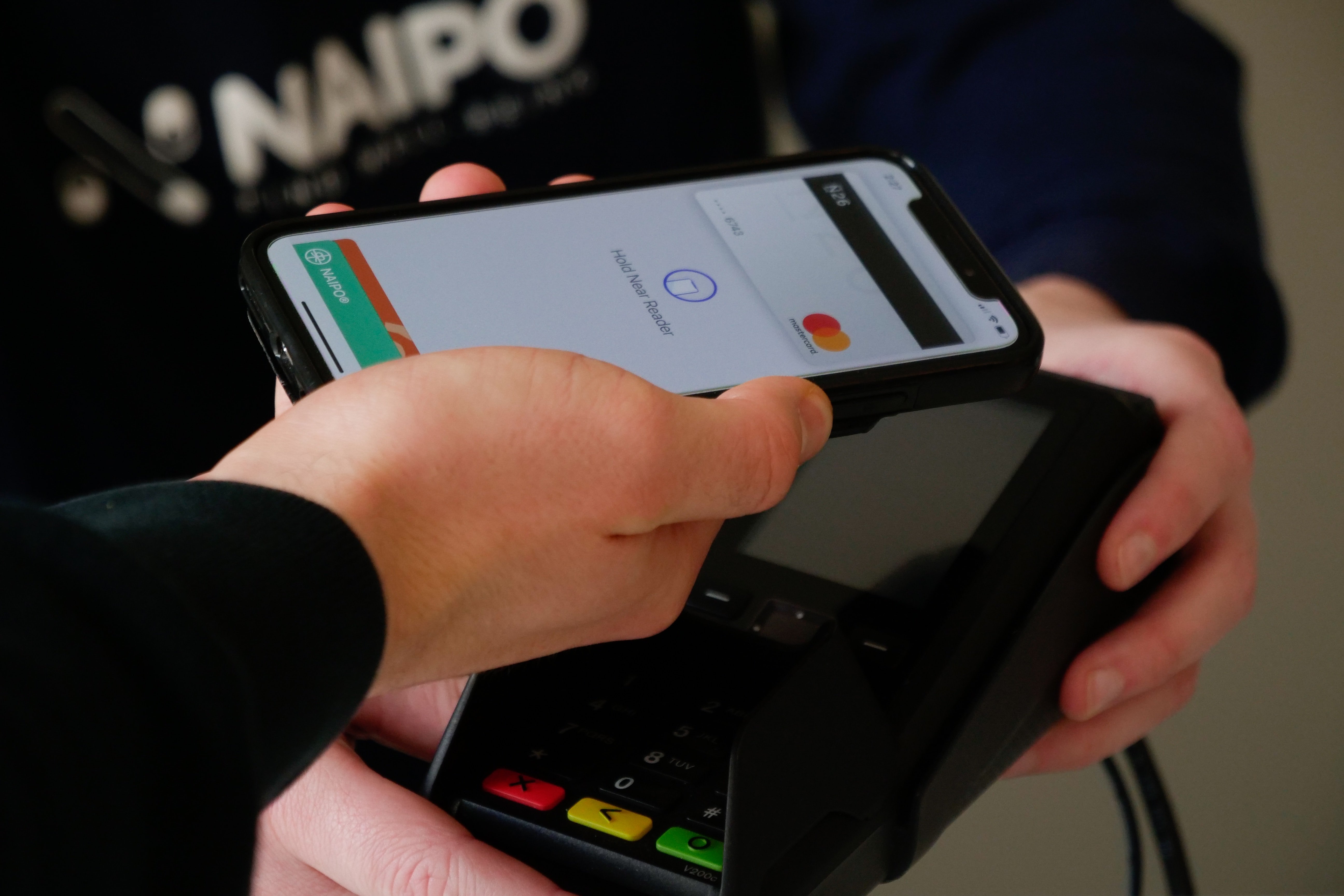Top Payment Gateways for Adobe Commerce in 2025
Choosing the right payment gateway for your Adobe Commerce store is important. Merchants need reliable, secure, and versatile payment solutions.
6 min read
 Tim Bucciarelli
:
April 24, 2023
Tim Bucciarelli
:
April 24, 2023

* This piece was originally written by EBizCharge, one of IronPlane's partners.
The credit card and payment processing industry has come a long way since the first multipurpose charge card was issued in 1950. Over the years, technological advancements have revolutionized how we pay for goods and services, and it's safe to say the industry will continue to evolve.
This article will take a closer look at the history of the credit card and payment processing industry, market size, parties involved, payment processing methods, and what we can expect in the future.
The history of the credit card and payment processing industry dates back to the early 20th century when merchants used charge plates to keep track of customers' credit.
However, it wasn't until 1950 the first charge card was issued by Diners Club to allow cardholders to charge for restaurant meals. Later, American Express issued its first credit card in 1958, followed by Bank of America's launch of the BankAmericard (which later became Visa) in 1958. Mastercard was founded in 1966 as Interbank Card Association and changed its name to Mastercard in 1979.
Nowadays, the credit card world continues to advance rapidly, and businesses need to keep up with the increasing amount of credit card usage. Currently, 84% of U.S. consumers use credit cards, making it essential for companies to accept and process them.
With credit card payments rising, the size of the payment processing market is also rapidly increasing.
The world of payment processing is a large market that continues to grow each year.
The global payment processing solutions market size was valued at USD 47.61 billion in 2022 and is expected to expand at a compound annual growth rate (CAGR) of 14.5% from 2023 to 2030.
The global payment processing solutions market was valued at an incredible $47.6 billion in 2022 and expected to reach $140.65 billion by 2030, growing at a CAGR (Compound Annual Growth Rate) of 14.5% from 2023 to 2030.
The growth in the market is driven by factors such as the increasing adoption of mobile payments, the rise in eCommerce transactions, and the need for secure and reliable payment processing solutions.
The following section will cover the need and importance of payment processing companies.
With the percentage of Americans who own a credit card increasing every year, companies need to adapt to the evolving needs of consumers and find ways to accept different forms of payments, especially credit cards.
Finding a reliable payment processor will help merchants efficiently manage different forms of compensation and provides various merchant services, such as:
Payment processing companies also offer fraud detection and prevention services, chargeback management, and reporting and analytics tools.
In short, payment processing companies help merchants accept customer payments safely, securely, and efficiently.
Four prominent parties are involved in payment processing: the issuing bank, the card brand, the acquirer, and the service provider.
The issuing bank issues credit and debit cards to customers and is responsible for setting the credit limit and interest rates. The issuing bank also handles billing, customer service, fraud detection, and prevention. Issuing banks include institutions such as Wells Fargo, Citi, Chase, and more.
Card brands like Visa, Mastercard, and American Express are intermediaries between the issuing bank and the acquirer. They set the rules and regulations for card acceptance, provide the technology for processing transactions, and charge fees for their services.
The acquirer processes transactions on behalf of the merchant and settles funds to the merchant's bank account. The acquirer also takes on the risk of fraud and chargebacks and charges fees for their services.
The service provider provides merchants the hardware, software, and support to accept credit and debit card payments. They also offer fraud detection and prevention services, chargeback management, and reporting and analytics tools.
As many parties are involved in payment processing, there are also many methods companies use to accept payments.
The rise of payment processing and credit card usage has caused an abundance of payment methods to appear over the years. Whether you want to accept payments in-person or from the comfort of your home, there's a method for you.
Here are four popular methods of payment processing:
POS systems are used in brick-and-mortar stores to process transactions. These systems are typically a combination of hardware and software that enables merchants to accept various payment methods, including credit and debit cards, mobile payments, and contactless payments.
POS systems are becoming increasingly sophisticated, with features like inventory management, employee scheduling, and customer relationship management.
Mobile payments refer to the use of mobile devices to process transactions and are commonly used by millennials and Gen Z consumers. Mobile payments are typically processed through a mobile wallet app, which securely stores the user's payment information.
Popular mobile payment methods include Apple Pay, Google Wallet, and Samsung Pay.
eCommerce payments refer to online transactions, typically through an online website or app. eCommerce payments have become increasingly popular over the years, especially after COVID-19, which has led to a surge in online shopping.
Popular eCommerce payment methods include credit and debit cards, PayPal, and digital wallets.
Contactless payments are transactions conducted without physical contact between the customer's payment device and the merchant's payment terminal. Some popular contactless payment methods include Apple Pay, Google Pay, and contactless credit and debit cards.
Payment processing continues to advance and adapt to the changing times and technological advancements, so it’s important to know what to expect in the future.
The payment processing industry is constantly evolving, and several trends will likely shape its future. Here are some of the key trends to watch out for:
Security is a crucial concern for the payment processing industry and will only become more critical in the future. Threats of fraud and cybercrime continue to rise. In fact, global cyberattacks increased by 38% in 2022 compared with the previous year. The risk of these malicious attacks can be insurmountable for organizations.
These attacks can range from phishing scams to ransomware attacks, where attackers gain access to a company's payment processing system and hold their sensitive data hostage until a ransom is paid. Apart from the financial losses, such attacks can also result in reputational damage, loss of customer trust, and legal liabilities. Therefore, payment processing companies stay up-to-date with the latest security trends to protect their customers from these attacks.
There will likely be a greater emphasis on advanced authentication methods, such as biometric authentication and tokenization, moving forward. These methods can help increase security and prevent fraud by verifying customers’ identities and ensuring transactions are legitimate.
Point of sale (POS) systems are already an essential part of many merchants' operations and are expected to become even more sophisticated. With features such as artificial intelligence, machine learning, and voice recognition, POS systems can provide customers with a more personalized and seamless experience.
For example, machine learning algorithms could analyze customer data to offer customized product recommendations, while voice recognition technology could enable customers to purchase using voice commands.
Payment processing companies will likely integrate more with other services, such as accounting software, inventory management, and marketing automation. This will enable merchants to streamline their operations and provide a more cohesive customer experience.
For instance, payment processing companies could integrate with accounting software to automatically record transactions and reconcile accounts or integrate with marketing automation software to send targeted promotions to customers based on their purchase history.
Companies that stay ahead of the latest trends and technologies will be well-positioned to succeed in the industry.
The credit card and payment processing industry will continue to be pivotal in enabling businesses and consumers to efficiently and securely accept payments. As the industry evolves, merchants and processing companies must adapt to new trends and technologies to remain competitive and provide a seamless customer experience.
Payment processing is the mechanism through which transactions are authorized, captured, and settled. It involves the steps required to complete a purchase made with a credit card, debit card, or other electronic payment methods. This process ensures that funds are securely transferred from the customer’s bank account to the merchant’s account.
The key players in the payment processing industry include merchants (businesses accepting payments), acquiring banks (merchant’s banks), issuing banks (customer’s banks), payment processors (companies facilitating transactions), payment gateways (technology platforms that connect merchants and payment processors), and card networks (like Visa, MasterCard, and American Express).
Payment processors support a variety of payment methods including credit cards, debit cards, e-wallets (such as PayPal, Apple Pay, Google Wallet), bank transfers, and mobile payments. Some processors also support newer methods like cryptocurrencies and buy now, pay later (BNPL) options.
The main challenges in the payment processing industry include security threats like fraud and data breaches, maintaining compliance with regulatory standards (such as PCI DSS), managing transaction fees and costs, ensuring smooth integration with various eCommerce platforms, and adapting to the rapidly evolving payment technologies and consumer preferences.

Choosing the right payment gateway for your Adobe Commerce store is important. Merchants need reliable, secure, and versatile payment solutions.

Payment Card Industry Data Security Standard (PCI DSS) is a set of requirements for safeguarding cardholder data — here's what your eCommerce business needs to know.

In this article you will learn 4 Ways Magento Payments Can Increase Your eCommerce Revenue in 2019.